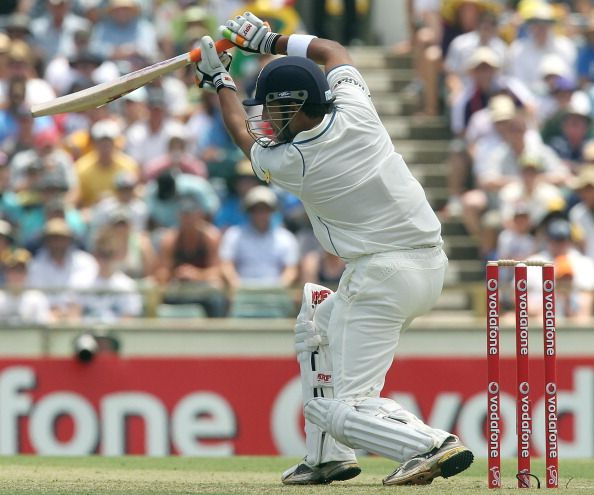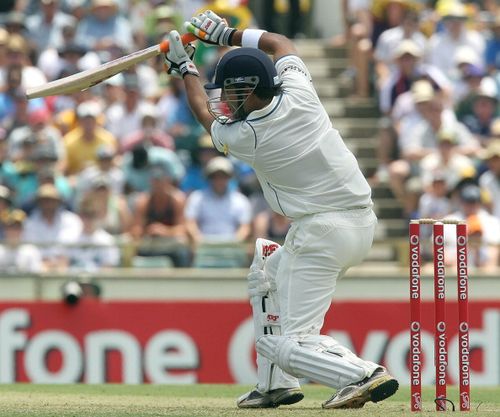
Patience - The decisive strategy in Test cricket

It was disheartening; the sad demise of Indian cricket. I was bewildered to see the team which used to manage 300+ scores in 50 overs, fail to cross the 300 threshold when the available overs were unlimited. So what was missing? We had the skills, sponsors, psychologists, psychotherapists and the same set of players. Only the coach was different. But Gary Kirsten’s departure shouldn’t have had such an impact that India failed to win in any format of the game. I had to find the answer. I started watching the fall of wickets to understand the nature of dismissals. A stark pattern appeared. The problem which was associated with Sehwag had now become infectious.
Everyone was blaming the bowlers – India did not have fast bowlers who could make the most of swinging conditions. None of our bowlers reached the 150 kmph mark. Indian spinners did not match their counterparts. But we failed to realize that the bowlers weren’t being given much to bowl at. Already high under pressure to defend a meagre total, they faltered more often than not.
I realized that the key to success in ODIs and T20s lies somewhere in Test matches. The single skill that could enable that success was ‘Patience’, and the Indian batting line-up was suffering due to the lack of it.
It is my opinion that cricket is more of a batsman’s game. In the end, the target is to get more runs than the other team. Thus, the onus is on the batsmen to take the team to victory. Patience helps a batsman to build an innings. It is said that good batsmen respect good balls and punish the bad ones. The best batsmen punish the good balls too. But it is equally important to note that the best batsmen have due respect for the bowler and the good balls.
I will compare two recent Test matches – India v/s England at Mumbai and South Africa v/s Australia at Adelaide Oval. At stumps on Day 3, India was struggling at 117/7. What would one expect from the tail on Day 4? South Africa on the other hand, were struggling at 77/4 at the end of Day 4. They had to survive an entire day to save the match. What do you expect from them?
South African batsmen, namely AB De Villiers, Faf Du Plessis, Jacques Kallis and Dale Steyn defined patience the next day, whereas Gambhir, Ashwin, Harbhajan and Zaheer showed us exactly what not to do in Test cricket.

Test matches, in true sense of the word, are the real test of skill. They bring out to the fore the real temperament of a batsman. A batsman needs patience to occupy the crease. He needs patience to get his eye in and understand the nature of the pitch. Not offering a shot to a few balls outside the off-stump and a few balls down the leg-side do not hurt your team’s chances as much as the loss of your wicket, while trying to play at those unnecessarily, does. Patience is the base on which a Test innings is built. Patience defines the batsman’s resilience and calm composure of his mind.
Indian batsmen lacked patience. Sehwag gets away with his ‘patience problem’ because he is a naturally aggressive player. Curtailing his ‘natural game’ has detrimental effects on his scores. However, Sehwag contradicts himself often whenever he pledges to play ‘longer innings’. I recall the instance before CWC 2011 when Sehwag said he wanted to bat till the 40th over of the innings. Sehwag was instantly successful, he smashed Bangladesh all over the park in the CWC opener, on his way to 175. But what about the other Indian batsmen? Do I hope to see a glimpse of patience from them? Pujara showed what patience means. You can be slow in the earlier part of the innings. But as you enter the comfort zone, the flood gates open and the runs begin to flow. Easy to say, yes, but indeed, much difficult to put in practice.

Sachin has, over the years, gained an uncanny knack of bringing out the best in a bowler. He has been dismissed to particularly good balls which have been almost unplayable. But the during his stay at the crease, he showed poise, composure and exuberant confidence.
The new generation players whose body language change dramatically in the shorter format of the game – Kohli, Yuvraj, Raina and Dhoni need to instil patience in their batting. Playing a defensive shot with no intention of scoring runs for 30 deliveries does not define patience. Patience in tangible terms, is the time a batsman takes to become comfortable at the crease. Not unless you are Ashwin, Harbhajan or Zaheer who throw their bat around within their first five minutes at the crease and expect to score a century at a break-neck speed which might even embarrass Afridi.
In contrast, South Africa had to last 90 overs to save the game at Adelaide, with 6 wickets in hand. Faf du Plessis and De Villiers showed intent and patience. They kept the scoreboard ticking. They scored off the bad balls and respected the good ones. The South African demi-god, Kallis’ innings was in line with the duo’s efforts. Despite being injured, he lasted 110 balls, more than India’s last five wickets put together in 2nd innings at Mumbai. Together, the Proteas denied the Australians an almost certain victory.
This patience, if it becomes the primary nature of a batsman’s innings, pays rich dividends in the shorter format of the game too. A batsman can get his eye in, spend some time at the crease and then explode – just the way Kohli does it in ODIs. Either you follow this mantra or possess the brute force that is the cornerstone of Gayle’s success. When it comes to T20s, a patient batsman can play the anchor’s role while the other slogs. A patient partnership of 6-8 overs in T20s can push your team towards a situation where you have wickets in hand and ample number of overs left. This gives you time to accelerate and post a commanding total.
Try to go through a successful Test batsman’s innings. The build up to almost all his hundreds will have patience written all over it. All I can do is to wish that Indian batsmen inculcate the key skill of patience in their batting so that our performance improves in all conditions considerably.